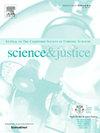主人DNA在家养宠物身上的转移和持久性
IF 1.9
4区 医学
Q2 MEDICINE, LEGAL
引用次数: 0
摘要
家庭宠物经常出现在犯罪现场、受害者和嫌疑人的家中,以及其他与犯罪有关或据称与犯罪有关的人的家中。在现场发现动物脱氧核糖核酸(DNA)的痕迹可以作为调查线索,但我们毛茸茸的朋友是否也会在途中留下我们的DNA呢?与家养宠物的日常接触,比如拍拍头、亲吻和拥抱,都可能导致我们的DNA转移到动物身上。为了探索这种可能性,研究人员测量了家养宠物的人类背景DNA,并评估了是否有任何DNA是专门属于家养宠物主人的。最后,还评估了宠物是否会将主人的DNA转移到光滑表面的物品上。本研究采用10只家养宠物,包括猫和狗。所有二次转移样本都没有产生适合与已知DNA谱进行比较或有资格上传到DNA数据库的谱。在直接从宠物身上采集的所有样本中,大约53%的样本产生的DNA图谱为DNA图谱的假设提供了支持,即宠物的主要主人是DNA图谱的贡献者,而不是从样本中获得的未知人员。然而,当从宠物接触过的物品中提取DNA时,结果不太可能支持DNA的来源是主人,而不是一个未知的人。本文章由计算机程序翻译,如有差异,请以英文原文为准。
Transfer and persistence of owner DNA on domestic pets
Domestic pets are frequently present at crime scenes, the homes of victims and suspects, and other persons of interest associated or allegedly associated with a crime. The presence of traces of animal deoxyribonucleic acid (DNA) at a scene can be an investigative lead but could our furry friends also be depositing our DNA along the way? Routine contact with our domestic pets from a pat on the head, kisses, and hugs may all result in transfer of our DNA to an animal. In an effort to explore this possibility, the background human DNA on domestic pets was measured and whether any DNA attributable specifically to the owner of the domestic pet was assessed. Finally, whether the pet would transfer the owner’s DNA onto a smooth surface item was also evaluated. Ten domestic pets comprised of felines and canines were utilized for this study. None of the secondary transfer samples produced profiles that would be considered suitable for comparison to known DNA profiles or eligible to be uploaded to a DNA database. Approximately 53 % of all samples collected directly from the pet produced DNA profiles that provided support for the DNA profile under the proposition that the primary pet owner is a contributor rather than an unknown person is to the DNA profile obtained from the sample. However, it is unlikely to have results that support that the source of the DNA is the owner, rather than an unknown person, when the DNA is taken from an item that has been touched by the pet.
求助全文
通过发布文献求助,成功后即可免费获取论文全文。
去求助
来源期刊

Science & Justice
医学-病理学
CiteScore
4.20
自引率
15.80%
发文量
98
审稿时长
81 days
期刊介绍:
Science & Justice provides a forum to promote communication and publication of original articles, reviews and correspondence on subjects that spark debates within the Forensic Science Community and the criminal justice sector. The journal provides a medium whereby all aspects of applying science to legal proceedings can be debated and progressed. Science & Justice is published six times a year, and will be of interest primarily to practising forensic scientists and their colleagues in related fields. It is chiefly concerned with the publication of formal scientific papers, in keeping with its international learned status, but will not accept any article describing experimentation on animals which does not meet strict ethical standards.
Promote communication and informed debate within the Forensic Science Community and the criminal justice sector.
To promote the publication of learned and original research findings from all areas of the forensic sciences and by so doing to advance the profession.
To promote the publication of case based material by way of case reviews.
To promote the publication of conference proceedings which are of interest to the forensic science community.
To provide a medium whereby all aspects of applying science to legal proceedings can be debated and progressed.
To appeal to all those with an interest in the forensic sciences.
 求助内容:
求助内容: 应助结果提醒方式:
应助结果提醒方式:


